In Search of Southeast Alaskan Adobo
“You Filipinos may have invented chicken adobo,” says Chuck Miller, a.k.a. Daanaxh.ils’eikh, the cultural liaison of the Sitka Tribe, “but we Tlingit perfected it.” A professional storyteller, he has deepened his voice to mimic the elder he’s quoting, who said this to a Filipino friend. His tone gives the pronouncement the gravity of gospel.
We’ve met at a cafe near the coast in Sitka to talk about Tlingit food. During the 10,000 years that the Tlingit have lived in Southeast Alaska, they’ve learned to harvest every possible bounty from the diverse landscape. In the maze-like network of waterways that percolate through the Alexander Archipelago, they catch salmon, halibut, and herring. They hunt seals for meat and oil and lay hemlock branches in herrings’ spawning waters to collect their butter-colored eggs. In the mountains of their territory, they collect salmon berries and hunt blacktail deer. Miller tells me about the clearest food memories of his childhood — smoking fish with his grandparents, collecting gumboot chitons and black seaweed on the beaches.
But when he learns that I’m half Filipino, the conversation strays to adobo. It’s one of his favorite foods, he says, and a staple on Tlingit tables both at home and at potlatches, communal feasts often held to honor the dead. During the ceremonial potlatch, families prepare and burn plates of their loved ones’ favorite food. “If anything happens to me, my family better know,” Miller says of his own future funeral potlatch: “They’re going to have the traditional smoked fish and herring eggs on one side, and then on the other side, there better be freaking rice and chicken adobo.”
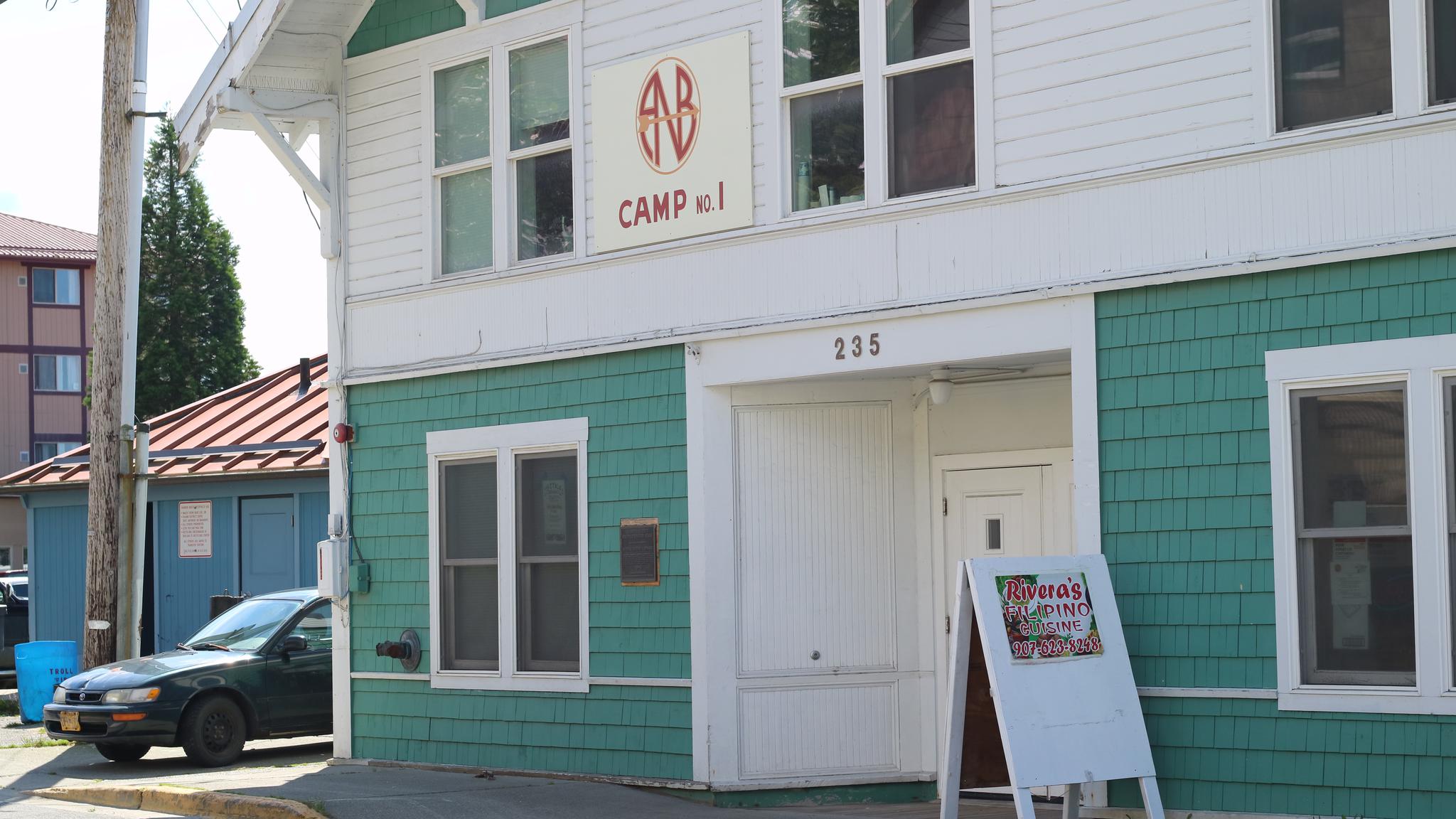
Miller isn’t alone in his enthusiasm for the Filipino dish, which usually involves meat simmered with soy sauce, vinegar, garlic, bay leaves, and black pepper. It’s on the dinner rotations of many households in Southeast Alaska, almost as run-of-the-mill as spaghetti and meatballs or baked salmon. It’s also a familiar restaurant and takeout food in Southeast cities, sold everywhere from the longstanding Bernadette’s Fast Food cart on Juneau’s wharf to the deli counters in IGA supermarkets to fine-dining spots with James Beard accolades, alongside other Filipino dishes like lumpia and pancit. After all, Filipinos are the largest immigrant group in Alaska and make up the majority of the state’s Asian population.
Adobo’s ubiquity in Tlingit homes in particular is a legacy of a century of close contact between the Filipino and Alaska Native communities in Southeast. Nearly every family has its own version, and every recipe tells a story — epic tales spanning generations of migration, love, hardship, and adaptation. The dish that results is part of Southeast’s unique regional cuisine, and it only could have been invented here.
An Alaskan recipe
There’s a saying in the Philippines that there are as many versions of adobo as there are islands in the country (over 7,500), and there are at least as many in Alaska as there are islands in the state (over 1,800). But the version of adobo you’ll find most often in Southeast, especially in Tlingit homes, has a few defining characteristics that set it apart from its progenitors. Southeast adobo tends to be sweeter, with white or brown sugar to temper the vinegar — usually apple cider vinegar, which replicates the mild acidity of sugarcane or palm varieties. Chicken is the most common protein, but you’ll also encounter adobo made with salmon or game animals like deer. The sauce is thickened with cornstarch so that it’s more like a gravy than the sabaw (broth) requisite to a Filipino meal.
In place of black peppercorns and bay leaves, many Alaska cooks will use pickling spice, a blend that’s as common in Southeast cupboards as Old Bay is in Baltimore. Pickling spice contains black pepper and bay leaves, but it can also include cinnamon, allspice, cardamom, ginger, and other warm spices, depending on the brand. This is how Miller makes his adobo, usually with chicken on the bone.
Miller learned the recipe from his mother, who learned it from the Filipino restaurateur Nick Pelayo. Born in Panay, Philippines, Pelayo moved to Juneau in 1924 and ran a string of restaurants there (including New Chinatown Cafe, Tropics Cafe, and Royal Cafe, all now closed), plus restaurants in Sitka, all with his Tlingit wife Mary Howard Pelayo, a.k.a. Kaa T’eix.
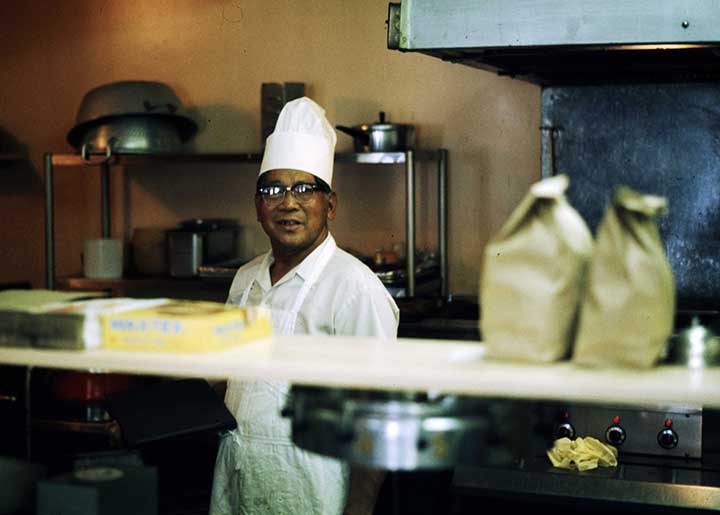
Pelayo was one of the Alaskeros, Filipino men who migrated to Southeast in droves to work in the region’s burgeoning salmon canneries and gold mines in the early 20th century, when both the Philippines and Alaska were outposts in the expanding American empire. The canneries depended on the Alaskeros because they could pay them less and give them more menial work than white employees. For similar reasons, canneries hired many local Tlingit workers; men worked on the fishing boats, while women processed the fish.
By the 1920s, Filipino cooking became standard fare at the cannery bunkhouses — then colloquially called “Filipino bunkhouses” — when the provided food met neither the quantity nor quality needed to fuel the grueling work on the slime lines. The bunkhouses were the first place many Tlingit people and other non-Filipinos encountered adobo. It’s also where Filipino men and Tlingit women encountered each other, leading to marriages, a community, and a new generation with a distinct identity and cuisine.
Miller told me that the best place to try adobo like what Pelayo and his mother used to make is the Valley Restaurant in Juneau. “They have just the best food ever,” he says. “Nothing like it.” The Valley is located just downwind of the Mendenhall Glacier, about a mile from the airport; the cozy building is squat and red as an abandoned caboose, and it’s mostly old-timers at the pleather booths, nursing thick-walled mugs of coffee. A wooden flounder hangs below the rafters like a household saint.
I visit the Valley with Marcelo Quinto and Bob Paulo, Tlingit elders and fixtures in the town. Eighty-one and 71 years old, respectively, the two men share a brotherly ease that comes from decades of close friendship. Everyone knows them here — the manager of the restaurant asks Paulo why he hasn’t visited in a while, and a couple stops by the table to congratulate Quinto on finally selling his boat.
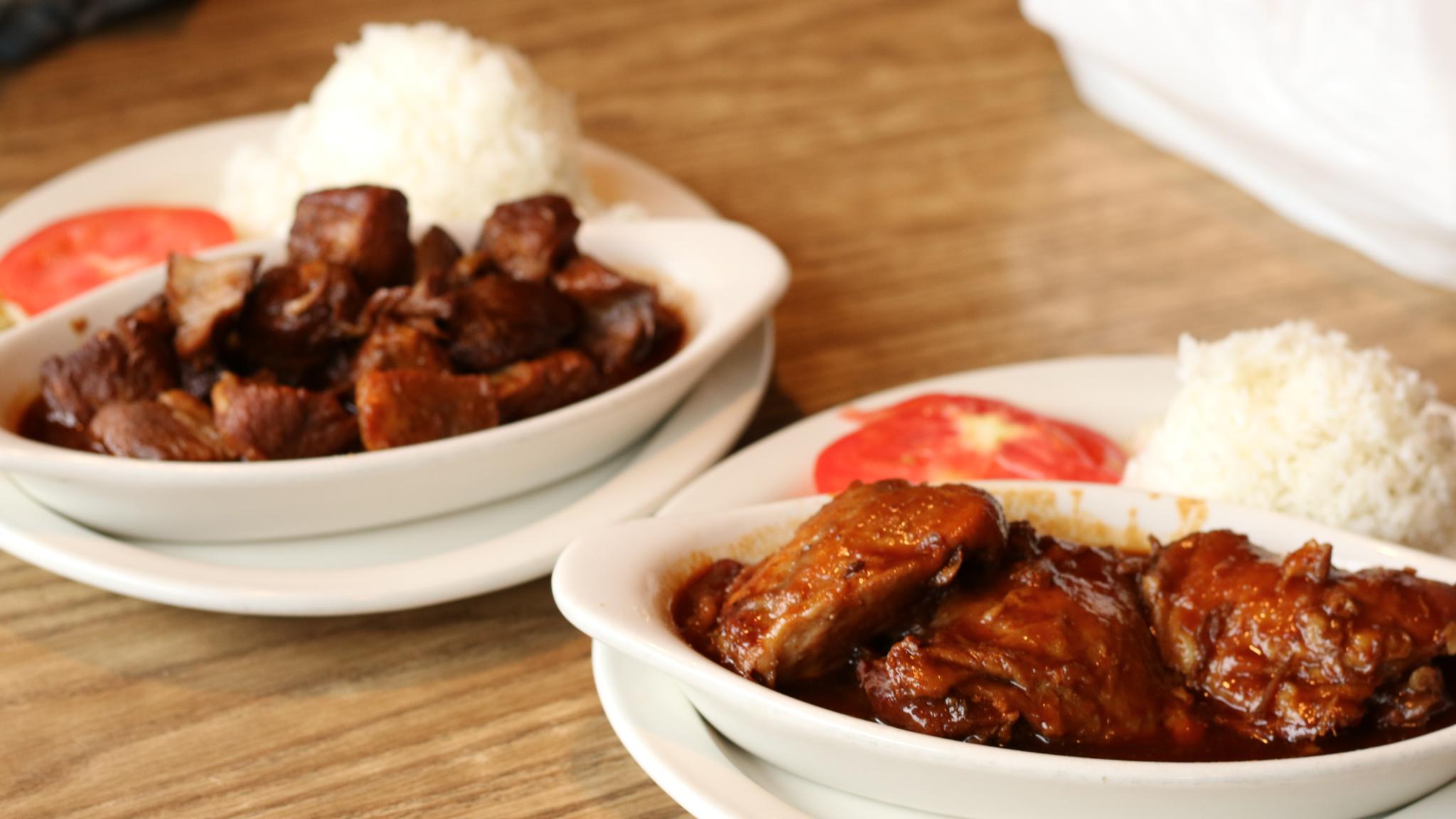
We slide into one of the booths and order chicken and pork adobo. After a harbinger of house salad, the adobo arrives, tucked into almond-shaped gratin dishes. The sauce gleams like polished mahogany. In it, sugar and soy have alchemized to the midnight sweetness of molasses. Whole spices bob in its depths: a coriander seed here, a clove there. The combination recalls Christmas — figgy pudding, mulled wine — or Taiwanese lu rou fan more than it does the tart, garlicky adobo my lola used to make.
The two men laugh often as they share stories from their youths, though it soon becomes clear that it wasn’t easy to grow up mixed race in the first half of the 20th century. Quinto and Paulo are among the dozens of people of their generation who identify as mestizo or “Tlingi-pino.” Their fathers were Alaskeros; their mothers were Tlingit women who worked alongside them in the canneries. “My mother always said, you’re Filipino and you’re Tlingit, and don’t you forget it,” says Quinto. His mother, Bessie Quinto (née Jackson), was a prominent leader who helped establish Juneau’s Filipino Community, Inc. with other Tlingit wives so their husbands and children would have a place to socialize in the segregated city. The organization still exists and has a community hall in downtown Juneau.
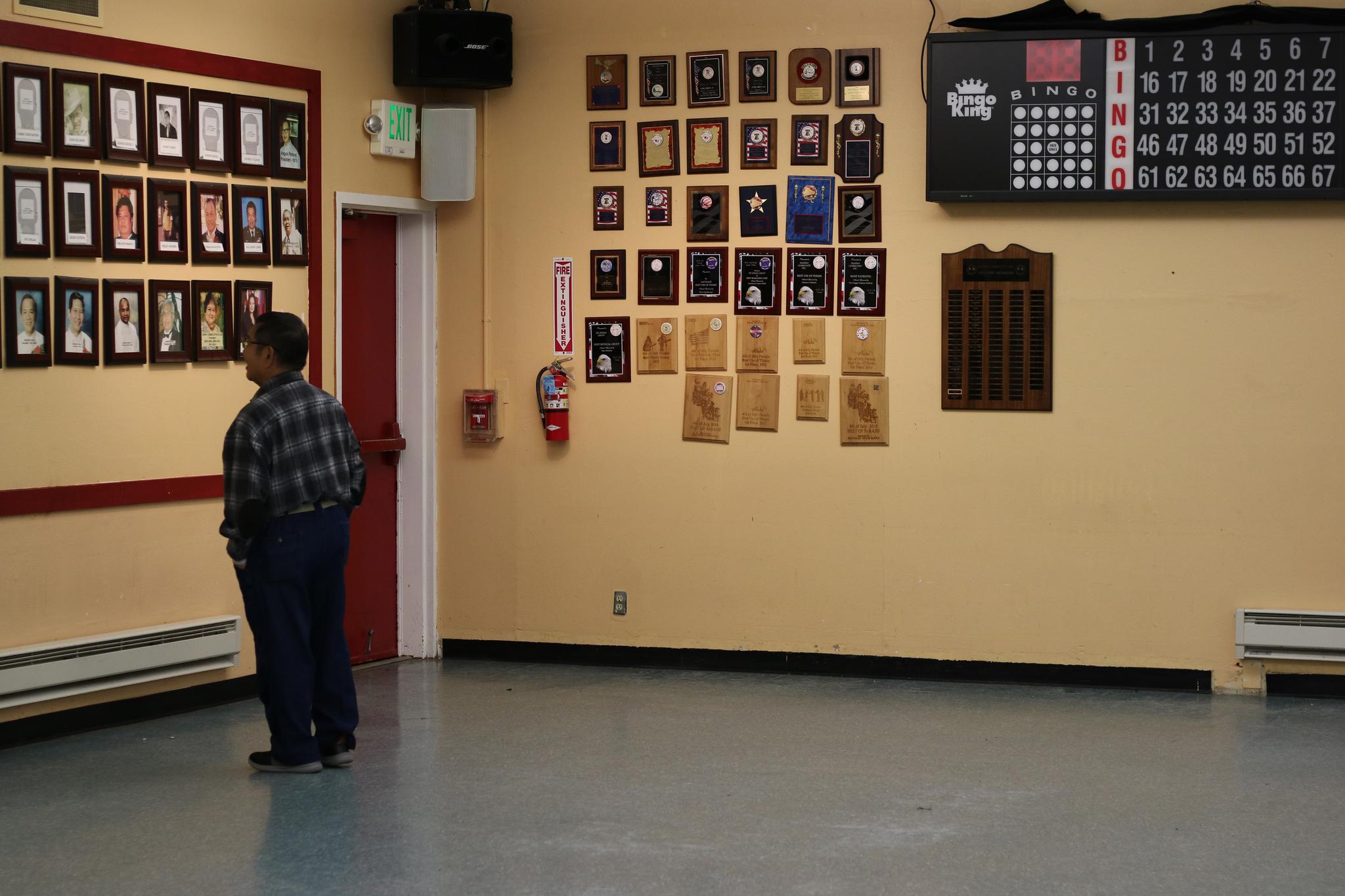
Quinto remembers a method of cooking adobo at the cannery that involved browning meat and making a dark gravy with the drippings — no soy sauce, which only became commonplace in American stores in the 1970s. Garlic, onion, and vinegar helped approximate the flavors of home. (In 1977, Pelayo’s wife Kaa T’eix self-published a Tlingit cookbook that includes a recipe for seal adobo using a similar method, with paprika and Accent-brand MSG for extra umami.)
The canneries’ cast-offs — the heads, spines, fins, and other parts kept out of the cans — became a valuable food source for the camps. Tlingit workers fermented the heads into k’ínk’, a.k.a. stinkheads, a delicacy with the aroma of washed-rind cheese. Filipinos used the fins, spines, and intestines to make their own fermented fish product: bagoong, an indispensable condiment usually made with krill or small fish in the Philippines. Members of each group grew fond of the other’s ferment. Miller remembers stories of his grandmother sneaking off with her Filipino friends to the smokehouse at Todd Cannery to share stinkheads and gossip. “They’d laugh and giggle so much they’d hear them through the camp,” he says.
Though they were hired as seasonal workers, many Alaskeros ended up staying permanently in Alaska, and many entered the food industry. By the 1940s, 70 years before Anthony Bourdain predicted that Filipino food would become America’s next big thing, Filipino restaurants were commonplace in Southeast. In Ketchikan, there was the DeLuxe Cafe, owned by C. Mendoza and Victor Ortaliza; Tenakee Springs had H.J. Floresca’s Blue Moon Cafe & Bakery. The Pelayos owned at least five restaurants in Sitka and Juneau. These restaurants served Filipino food — or as close as they could approximate in the days before Asian supermarkets and barged-in bagoong — but they were also town hangouts that turned out bacon and eggs, steaks, and chops with a side of local gossip.
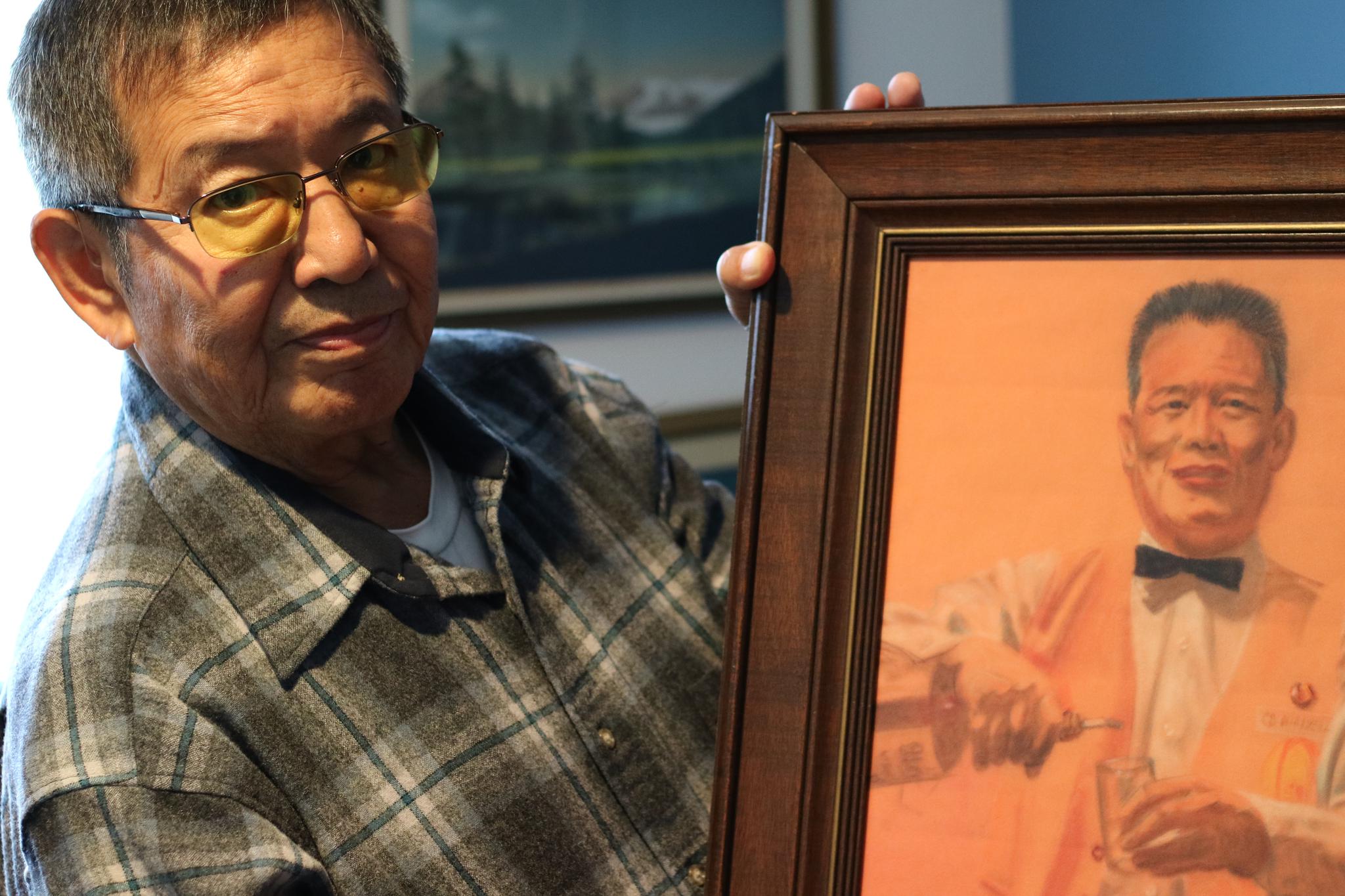
Other Filipino chefs became known for working in local hotels and on the Alaska Marine Highway, the state-run ferry system, which once featured white-tablecloth dining that rivaled the golden age of ocean liners. One Marine Highway executive chef, Andres Aquino Cadiente, published a cookbook in 1974 that bore the grandiose title “El Mundo Food Almanac” and opened with a preface by former Alaska governor William Egan. It includes a recipe for “Chicken Adobo ala McArthur” (that is, Arthur MacArthur, third military governor of the Philippines) that, like Kaa T’eix’s seal recipe, includes MSG, pickling spice, and no soy sauce. The cookbook notes that Filipino food has already become familiar to Alaska’s diners: “Many of the Filipino dishes of today have become a welcome variation to western cookery,” Cadiente wrote.
Quinto also spent time working in the Marine Highway’s kitchens and at Juneau’s Baranof Hotel, an employer of hundreds of Filipinos where his father (also named Marcelo Quinto) worked as a bartender for more than 20 years. Later, the younger Quinto brought his kitchen training to the Alaska Native Brotherhood — he’s been part of the organization since 1951 and was elected Grand President last November, after more than 15 years as president of the Glacier Valley camp. Under his direction, Glacier Valley raised funds by catering for corporate events: Sealaska, the Juneau-based regional Alaska Native corporation, and Goldbelt, the local Alaska Native corporation serving the Juneau area are among their clients. At those Native events, adobo is standard fare.
The next generation of Southeast adobo
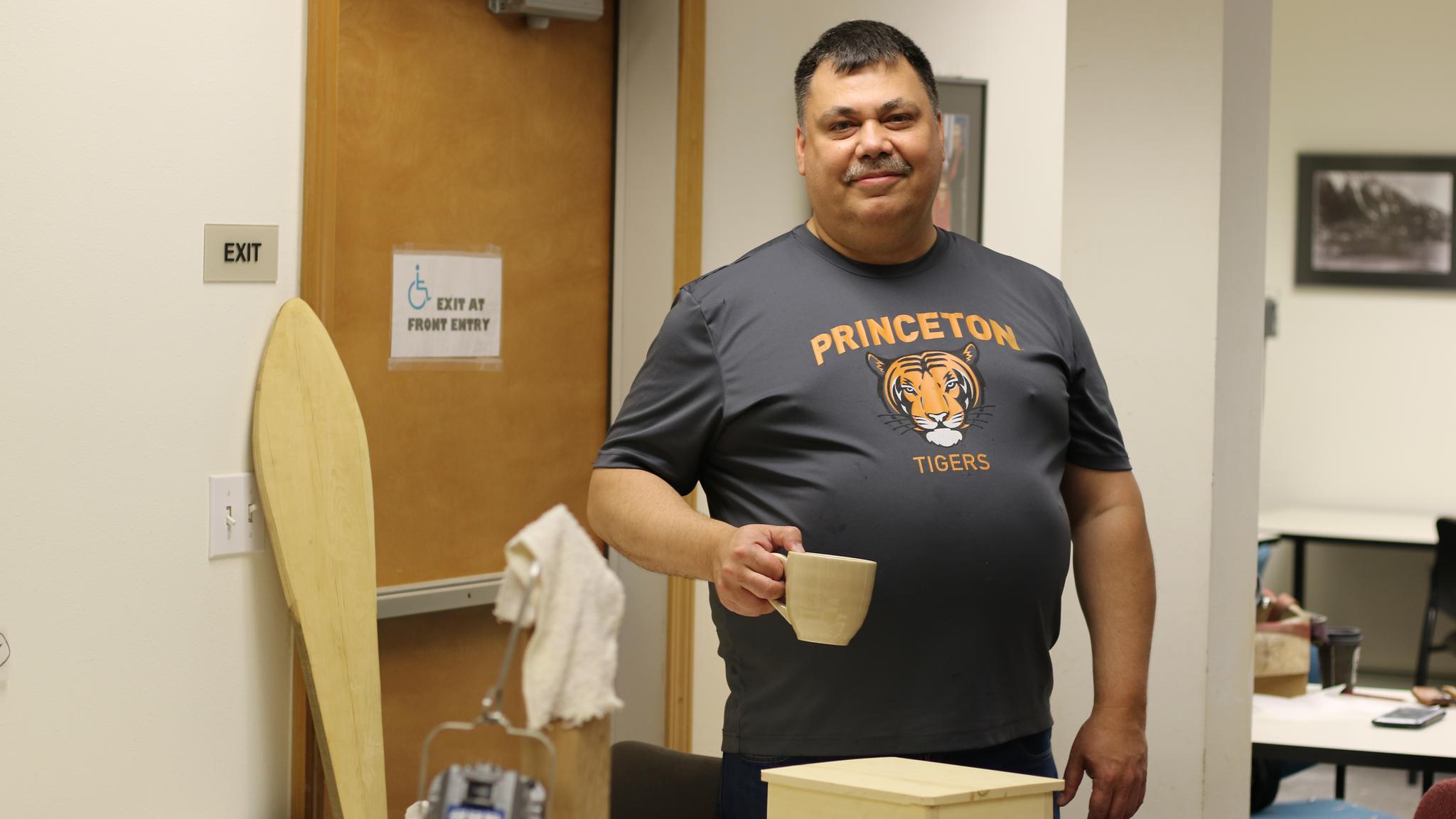
Quinto took me to Gajaa Hít, the site of a carving workshop operated by Sealaska Heritage Institute, to meet a man he called his protege, Donald Gregory a.k.a. Héendeí. Officially the facilities and special projects coordinator at Sealaska Heritage, a nonprofit founded by Sealaska that promotes Tlingit, Tsimshian, and Haida art and culture, Gregory doubles as Quinto’s sous chef. He took a break from carving an eagle mask to talk to me about Filipino food.
Gregory started working for Quinto when he was 18, learning to scale up the flavors he remembered from his Filipino grandfather’s kitchen. At his first job, Quinto scolded him for cutting the chunks of meat for the adobo too big. “He said, ‘Hey, we’re cooking for Goldbelt, cut that four more times!’ Because they always had way too many people show up for their events.”
His “commercial-batch” adobo base is one part vinegar, one part soy sauce, and two parts water; the spices go into a big tea ball that floats like a buoy in the vat-sized pot. “It’s kind of mellowed out, and it doesn’t have the real strong taste to it,” he says. “But a lot of times when we’re cooking for hundreds of people, there’s no time to marinate anything. It’s going in the pot and it’s getting turned on.” On his own time, Gregory likes to make what he calls “Tlingit soul food.” He’s especially proud of his seal ribs, simmered with bay leaves, black pepper, garlic, and onion like adobo.
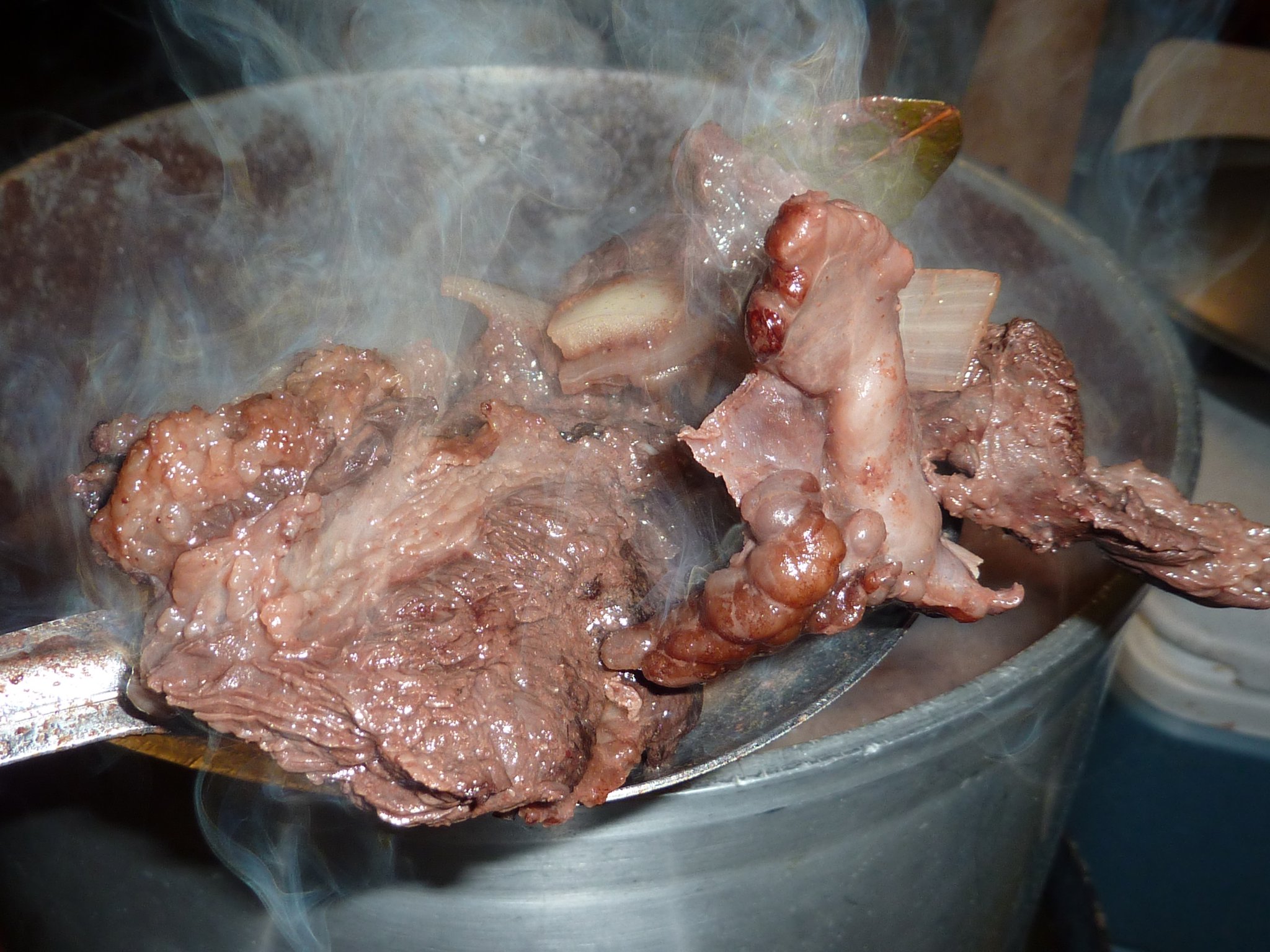
Like many Alaskeros who married Tlingit women, Gregory’s grandfather worked hard to assimilate into his wife’s culture. He was adopted into the Brown Bear clan, learned the notoriously complex language, and became known as one of the clan’s best fishermen. He’s technically Gregory’s step-grandfather, but “growing up, I never knew that wasn’t my mom’s real dad,” he says. “One time my mom heard me telling somebody when I was 18 that I was a quarter Filipino, and afterwards she told me, ‘You know, you’re not Filipino.’ I started crying. I was like, ‘How come you never told me?’”
Two generations removed from the Alaskeros, Gregory illustrates how Filipino food and identity became subsumed into the Southeast milieu. He grew up on South Franklin Street, then the “rough downtown” of Juneau where non-whites were relegated by racist housing practices. “There were a lot of Filipinos that lived there and Tlingits, and the Filipino Community was just across the street from the apartment building I lived in,” he says. He remembers all the kids of the neighborhood hanging out at the community hall to watch TV and play pool. Then they might go fishing under the dock or have a BB gun fight. “Some of the kids were Tlingit, some were mestizo, and the rest were full Filipino,” he says. “We were all like brothers.”
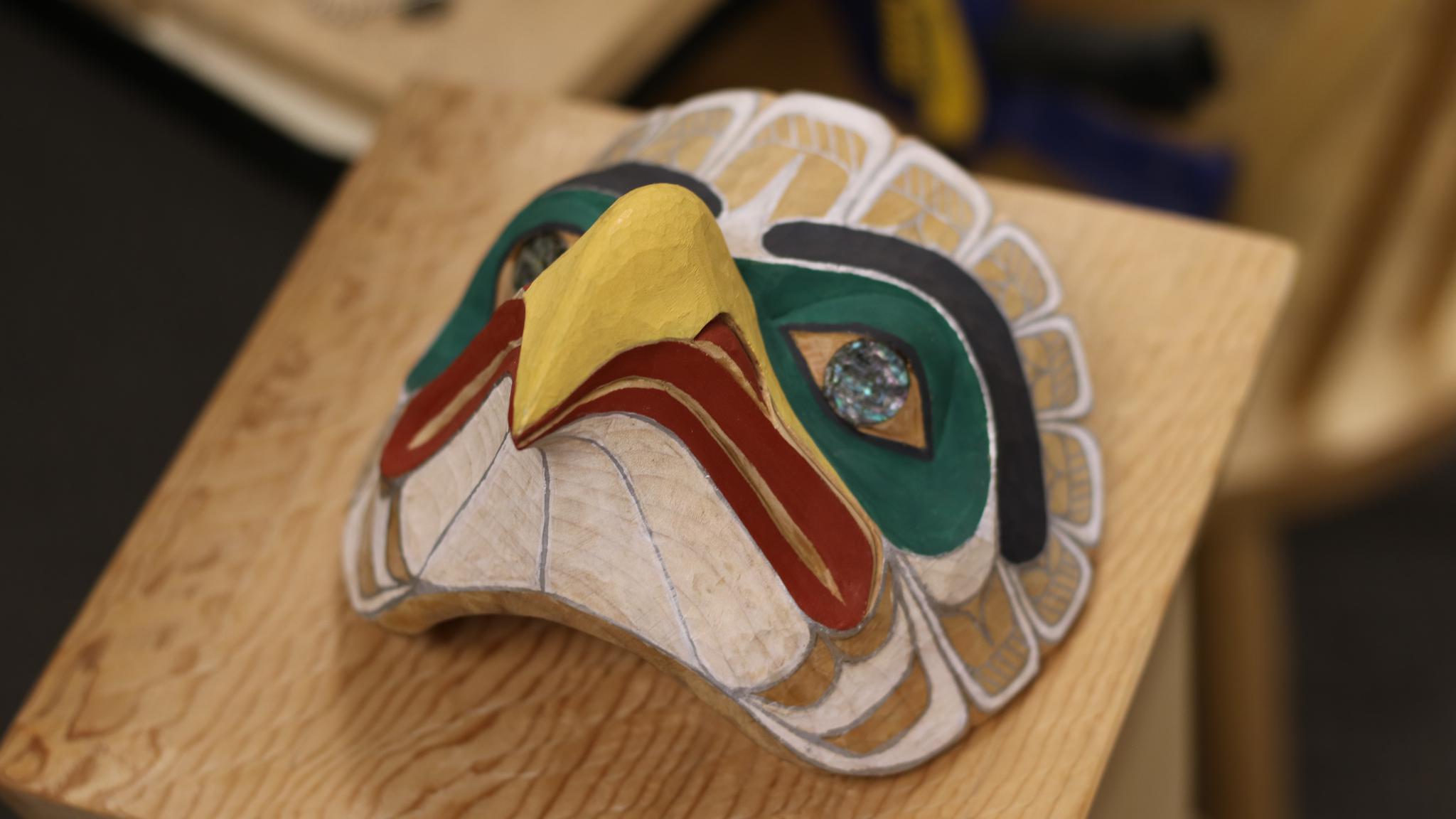
His nephew, Raymond Gregory a.k.a Took, is the namesake of his Filipino great-grandfather. A Tlingit carver, singer, and dancer, the younger Gregory travels around the world to share and practice his art and is currently studying sculpture at the Institute of American Indian Arts in Santa Fe. He’s also shared his passed-down pork adobo recipe, with pickling spice and apple cider vinegar, with the people he meets in new places. “But it’s nowhere near as good as my uncle’s,” he says.
Raymond Gregory is part of the current generation of Alaska Native youth working to promote and expand upon their cultures, guided by traditional histories and values. Food is a major part of that effort: He takes pride in his knowledge of traditional methods for drying halibut and hopes to learn to harvest kóox, or chocolate lily, a wildflower whose bulbs break into kernels that can be eaten like rice. But adobo will remain on the menu. “Most Natives know how to make adobo, and most families make Filipino food,” he says. “We’re big adobo stans. We just worship it, it’s so good.”
Juneau’s young Filipino chefs are also carrying on the tradition. Rachel Barril, chef de cuisine of In Bocca al Lupo in downtown Juneau (whose chef, Beau Schooler, was a James Beard Awards semifinalist for Best Chef: Northwest in 2019, 2020, and 2022), is descended from Alaskeros on both sides, and the current owners of the Valley Restaurant are her cousins. She uses In Bocca al Lupo’s specials board to test out Filipino-Alaskan fusions: kare kare with foraged mushrooms and beach greens, crispy king salmon collars dressed escabeche-style in sweet-and-sour sauce. “Growing up American, growing up with Filipino culture, growing up Alaskan around all the natural resources that we have — that’s essentially what my specials end up being,” she says.
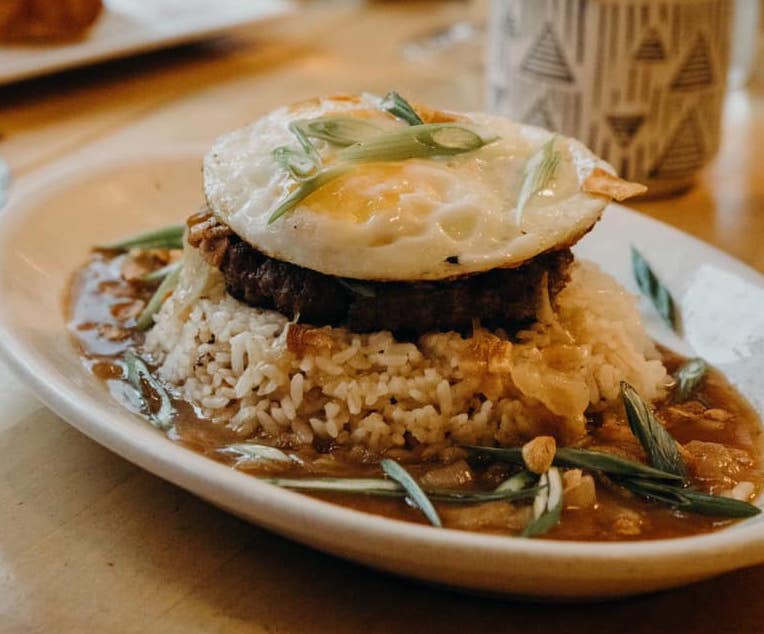
There’s an adobo loco moco at the Rookery Cafe, the sister restaurant of In Bocca al Lupo, that Barril added to the permanent menu during her tenure there. A mantle of caramelized onions blankets the hamburger patty, and edges of the egg are fried to a lacy frill. The adobo sauce that cascades down the glacial mound of rice may recall demi-glace at first, but a taste betrays a closer cousin. Faintly sweet and pricked with pepper, it’s just thick enough to coat the back of a spoon, like the adobo at the Valley Restaurant or in the Miller or Gregory homes.
Is it authentic adobo, or authentically Filipino? “If I wanted to be authentic, I’d have to go all the way to the Philippines and grow my own rice, kill my own chicken,” Barril says. “But it integrates a lot of the influences that I had in my life, or what’s available here. That’s what makes it authentic to me.”
A version of this article appeared in Eater with photographs by Ash Adams.
Add a comment
0 Comments Add a Comment?